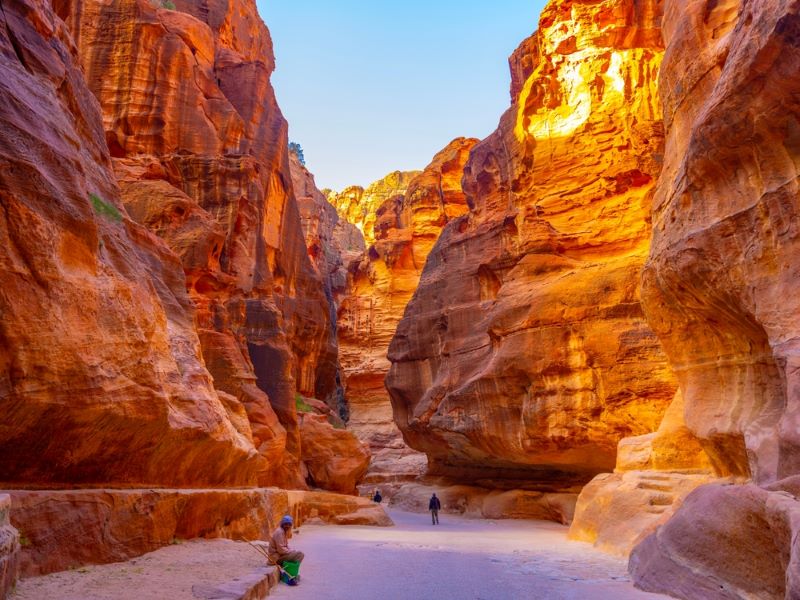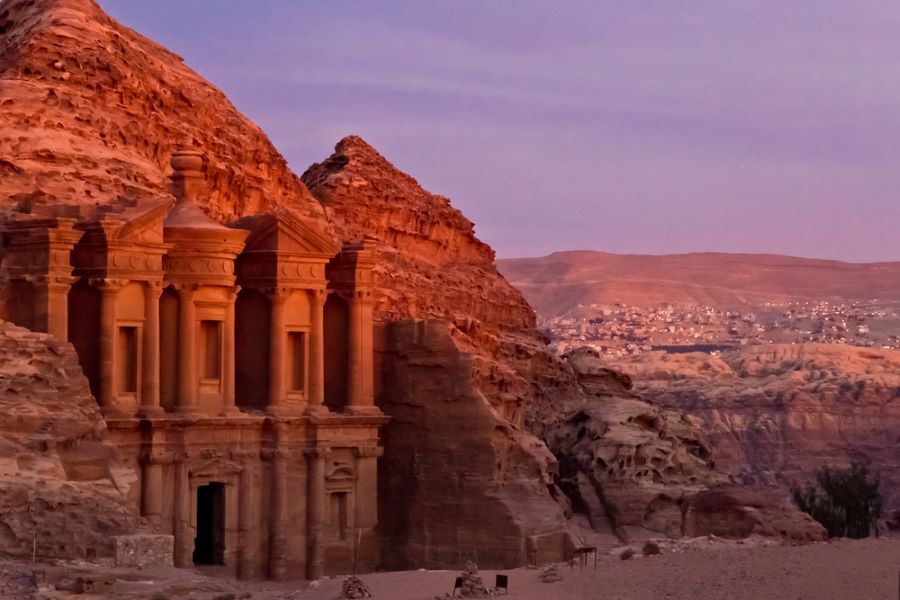Petra, Jordan, is a marvel of human ingenuity and natural beauty, embodying the long history and remarkable engineering skills of the ancient Nabatean civilization. Located in the southwestern desert of Jordan, Petra was once a thriving hub of trade and culture, which earned it a reputation as one of the most important cities in the ancient world. Today, it is a UNESCO World Heritage Site and one of the New Seven Wonders of the World, drawing visitors from around the globe to witness its breathtaking architecture and distinctive setting.
The history of Petra dates back to around the 4th century BCE, when the Nabateans, a nomadic Arab tribe, settled in the area. Over time, they transformed this remote desert location into a bustling city, strategically positioned at the crossroads of several major trade routes. Petra became a key center for commerce, linking the Arabian Peninsula with the Mediterranean, Egypt, and Syria. The Nabateans were skilled traders and engineers, and their wealth allowed them to carve elaborate buildings, temples, and tombs directly into the rose-red cliffs that define the landscape of Petra.

The Treasury, Petra, Jordan
One of the most striking features of Petra is its intricate water management system. The Nabateans developed a sophisticated network of channels, cisterns, and dams to collect and store rainwater, ensuring a reliable water supply in the arid environment. This ingenuity not only supported the city’s population but also made Petra a vital stop for caravans crossing the desert.
The city continued to flourish until it was gradually abandoned, beginning in the 4th century CE, following a series of devastating earthquakes and the shifting of trade routes that diminished its strategic importance. Over the next few centuries, as the Nabatean civilization declined and the region came under Roman and later Byzantine control, Petra’s population dwindled, and the once-thriving city faded into obscurity. By the time Western explorers rediscovered Petra in the early 19th century, it had been largely forgotten by the outside world, preserved in its remote desert setting.

The Siq, Petra, Jordan
Today, Petra’s allure lies in its stunning architecture and the sense of mystery that surrounds it. Visitors often enter the city through the Siq, a narrow, winding gorge flanked by towering cliffs that opens dramatically onto the iconic Treasury (Al-Khazneh), one of Petra’s most famous monuments. Carved directly into the rock, the Treasury is a breathtaking example of Nabatean artistry, with its intricate façade and grand scale leaving a lasting impression on all who see it.
Beyond the Treasury, Petra features a sprawling cityscape of tombs, temples, and amphitheaters, each carved from the rose-colored stone that gives Petra its nickname, the “Rose City.” Every corner of Petra offers a new discovery, from the massive Monastery (Ad Deir) perched atop a mountain to the Royal Tombs that line the cliffs.

The Monastery (Ad Deir), Petra, Jordan
Petra is located about 240 kilometers south of Amman, the capital of Jordan. Visitors typically reach the site by road, with buses and taxis offering regular service from Amman and other major cities. The journey takes around three to four hours, and many travelers choose to stay in the nearby town of Wadi Musa, which offers a range of accommodations and services.
The visitor experience at Petra is particularly awe-inspiring during the early morning or late afternoon when the site is bathed in the soft light of sunrise or sunset. These quieter moments allow visitors to fully appreciate the grandeur of Petra without the crowds, with the changing colors of the cliffs adding to the otherworldly atmosphere.
You Might Also Enjoy: Offbeat Travel: The Hot Springs of Pamukkale, Turkey

Petra by Night
For those seeking an even more intimate experience, Petra by Night offers an opportunity to see the city illuminated by thousands of candles, creating an atmosphere of tranquility and awe. Whether exploring the site by day or night, Petra offers an unforgettable journey into the heart of one of the world’s most extraordinary ancient cities.
Have you ever been to Petra? Tell us about your experience in the comments below!


Leave a Reply